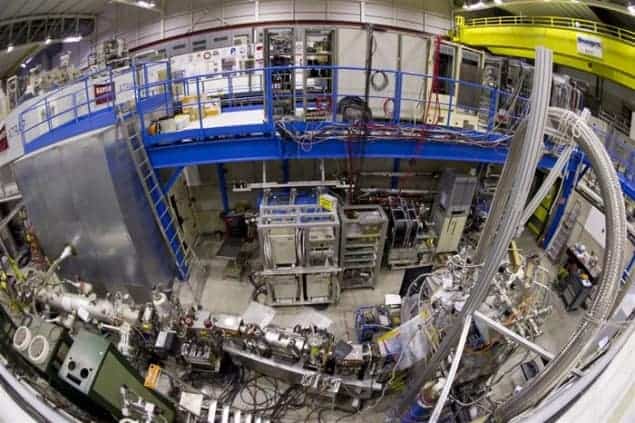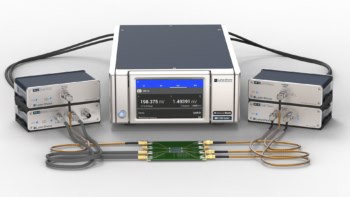
Researchers working on the Antihydrogen trap (ATRAP) experiment at CERN have made the first single-particle measurement of the magnetic moment of the antiproton. Achieved with an uncertainty of 4.4 parts per million, the magnetic moment is exactly opposite to that of the proton, as predicted. This result is 680 times more precise than previous measurements made on exotic atoms containing antiprotons and is an important step towards understanding why the universe contains more matter than antimatter.
Physicists are keen to capture and compare antimatter to its matter counterpart in order to conduct precision tests of charge–parity–time (CPT) symmetry. Understanding this symmetry could help explain why the universe contains so little antimatter. To do this, researchers make very accurate measurements of properties such as the magnetic moment and the spin of antiprotons to look for inherent differences between these and the properties of the proton.
Precise comparisons
“By comparing the antiproton’s tiny magnetic moment to that of the proton, we test the Standard Model and its CPT theorem at a high precision,” says ATRAP spokesperson Gerald Gabrielse of Harvard University in the US. To carry out the study, the researchers use a Penning trap to capture and suspend single antiprotons so that their charge, mass and magnetic moment can be precisely measured. The antiprotons themselves are supplied by CERN’s Antiproton Decelerator. “We detected the response of the suspended antiproton to radio signals that we sent in its direction. The size of the [magnetic moment] in the antiproton is determined by the ratio of the two frequencies that made the antiproton respond most energetically,” explains Gabrielse.
Challenging experiments
Gabrielse points out that the measurements were difficult to make and presented the team with many challenges. He tells physicsworld.com that the antiprotons available at CERN are moving at nearly the speed of light, so the researchers essentially need to slow each one down to a near-stop to capture them. “Also, detecting the motion of a single particle is a bit challenging, as you might expect, since the many particles in the nearby apparatus are also moving and their motion makes a noise signal that competes with the signal from our single antiproton,” explains Gabrielse. He also points out that the magnet moment of the antiproton is very small – about 500 times smaller than that of an electron – making measurements even more difficult.
Nevertheless, the team found that the magnetic moments of the antiproton and proton are “exactly opposite” – that is, equal in strength but opposite in direction with respect to the particle spins. “Here, exactly opposite means that the direction that the [magnetic moment] points with respect to the particle’s internal spin is opposite to that of the proton, but the size of the [magnetic moment] is the same,” says Gabrielse. “Our measurement is thus consistent with the prediction of the Standard Model of particle physics to a precision 680 times better than what could be determined in earlier measurements. As such, this measurement is a notable success of the Standard Model,” he says.
Despite the accuracy of these measurements, the ATRAP collaboration feels that much more precise and accurate measurements of the magnetic moment of the antiproton will be necessary to test the Standard Model prediction much more stringently. Gabrielse urges us to “stay tuned, since we believe that this is only the first step”. The team feels that, given time, it will “have the new quantum ideas and methods to eventually test this prediction of the Standard Model nearly 1000 times more precisely”.
The research is published in Physical Review Letters.



